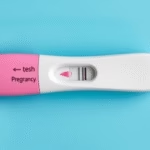Understanding Implantation Bleeding Stories BFP
When discussing implantation bleeding stories BFP, it is crucial to grasp what implantation bleeding actually signifies. Implantation bleeding occurs when a fertilized egg attaches itself to the lining of the uterus, which usually happens about six to twelve days after conception. This process can lead to light spotting or bleeding, termed implantation bleeding. For many women trying to conceive, observing this type of bleeding can be a hopeful sign known as “big fat positive” (BFP) pregnancy test results. The association between implantation bleeding and a subsequent positive pregnancy test is compelling for those wishing to start a family.
While implantation bleeding can be a normal occurrence, women should be attentive to the timing and characteristics of this bleeding. Understanding the properties can ultimately help distinguish it from other types of bleeding. Learning about implantation bleeding stories from those who have experienced it firsthand can provide reassurance and insight into what to expect. In this article, we will explore various aspects of implantation bleeding and the hopeful stories associated with achieving a BFP, aiding prospective mothers in navigating their journey.
Recognizing the Signs of Implantation Bleeding
Recognizing the signs of implantation bleeding is key for those trying to conceive. The characteristics of implantation bleeding are different from a typical menstrual period. While menstrual bleeding tends to be heavier, lasting several days, implantation bleeding is often lighter and shorter, typically lasting a few hours to a couple of days. Here are some important features to note:
- Color: Implantation bleeding is usually a light pink or brownish hue, while menstrual blood tends to be brighter red.
- Flow: The flow of implantation bleeding is often much lighter than a regular period and may not require the use of pads or tampons.
- Timing: Implantation bleeding generally occurs a week before your expected period.
Paying attention to these details can help women differentiate between implantation bleeding and menstruation. Additionally, many women have reported their experiences through online forums, sharing their own stories of spotting and subsequent BFPs. These narratives can be empowering and instill hope in those eagerly awaiting results.
Common Experiences of Implantation Bleeding
Women experiencing implantation bleeding often describe a range of emotions. While some express excitement and anticipation, others might feel confused or anxious. Common experiences shared in various stories include:
- Initial Confusion: Many women report being uncertain whether they are experiencing their period or implantation bleeding, leading to early tests that may yield mixed emotions.
- Connection to Symptoms: Some women recall accompanying symptoms such as mild cramping, which they later learned is typical of implantation.
- Timeliness: Many stories emphasize that timing is crucial; recognizing the difference between implantation bleeding and a late period often sways positivity in women awaiting results.
It is essential to approach these experiences with an open mind. Many women find comfort in discussing their journeys, often revealing that they were not alone in their experiences. This shared community can be extraordinarily supportive for those navigating through similar situations.
Understanding The Psychology Behind BFP and Implantation Bleeding
The psychological aspect of receiving a BFP after experiencing implantation bleeding is significant. For many women, a positive pregnancy test symbolizes hope, dreams, and the excitement of bringing a new life into the world. This anticipation may lead to a wide array of emotions:
- Joy: Experiencing this type of bleeding can lead many women to feel a sense of elation when paired with a positive pregnancy test.
- Anxiety: Along with joy, anxiety often accompanies a BFP, as women may worry about the health of their pregnancy.
- Connection: Many women establish a deeper emotional connection to their pregnancy early on, especially when considering their experiences with implantation bleeding.
Research suggests that cultivating a positive mindset can connect to overall wellbeing during pregnancy. Women are encouraged to share their feelings and stories, as this can help alleviate stress and anxiety throughout the journey.
Possible Reasons Behind Implantation Bleeding
Understanding the reasons behind implantation bleeding is crucial for anyone trying to conceive. Some of the most notable factors include:
- Hormonal Changes: The body experiences hormonal shifts after fertilization, which can trigger light bleeding.
- Uterine Displacement: The attachment of the embryo can cause light bleeding due to the physical changes occurring within the uterus.
- Heightened Sensitivity: For some women, the changes in their body while attempting to conceive lead to heightened sensitivity, revealing themselves in small amounts of bleeding.
By considering these reasons, individuals can become more informed about their bodies and what to expect during their hopeful journey towards pregnancy. This awareness serves as a foundation for a better understanding of one’s reproductive health.
When to Seek Medical Attention Regarding Implantation Bleeding
While minor spotting is often normal, there are instances when seeking medical attention is imperative. Signs that warrant a consultation include:
- Heavy Bleeding: If the bleeding becomes heavy like a menstrual period, immediate medical attention should be sought.
- Severe Cramping: Intense cramping accompanying the bleeding may indicate an issue requiring professional help.
- Passing Clots: Passing large clots alongside heavy bleeding is a cause for concern.
Recognizing these signs can help ensure women receive appropriate care and rule out any potential complications. Health professionals can address any concerns and provide guidance throughout the pregnancy journey.
Stories of Hope: Implantation Bleeding to BFP
Many women have shared stories about their experiences with implantation bleeding leading to a successful BFP. These accounts often detail journeys filled with excitement, nervousness, and eventual joy:
Women report various experiences during their cycles, where they noted light spotting many days before taking a pregnancy test. In many cases, this spotting turned out to be implantation bleeding, ultimately resulting in a positive outcome. These stories resonate with others facing a similar experience, offering comfort and understanding as they await positive results.
Moreover, support among women has grown significantly, with countless forums and social media spaces dedicated to sharing such stories. Women’s personal connections and testimonies often prove invaluable, creating an encouraging environment for those awaiting or trying to conceive.
Final Thoughts
In conclusion, understanding implantation bleeding and its connection to pregnancy is a vital aspect for aspiring mothers. By recognizing the signs, anticipating emotional experiences, and being aware of what to seek regarding medical concerns, women can navigate their journeys more comfortably. Many personal stories provide hope and encouragement, illustrating the possibility of a BFP follow-up after experiencing implantation bleeding.
Ultimately, while individual experiences may vary, the collective narratives surrounding implantation bleeding can foster a sense of community among those who are trying to conceive. Sharing stories can lead to support networks and advice from others who have walked similar paths. Gaining knowledge about implantation bleeding, its characteristics, and potential outcomes can empower women during a hopeful yet uncertain time. These experiences, combined with accurate health information, make for a balanced approach towards pregnancy planning.
Frequently Asked Questions
1. How soon after implantation bleeding can I take a pregnancy test?
It is generally recommended to wait at least a few days after experiencing implantation bleeding before taking a pregnancy test for the most accurate results.
2. Can implantation bleeding last for several days?
Implantation bleeding usually lasts for a few hours to 1-3 days. If it continues longer than that, it may not be implantation bleeding.
3. Is cramping normal with implantation bleeding?
Light cramping can accompany implantation bleeding and is often considered normal. However, severe cramping should be evaluated by a healthcare professional.
4. Can you have a BFP without experiencing implantation bleeding?
Yes, many women experience a BFP without any prior indication of implantation bleeding. Every woman’s body reacts differently.
5. Should I be worried if I notice spotting at the beginning of my pregnancy?
Some spotting in early pregnancy can be normal; however, heavy bleeding or severe pain should prompt you to contact your doctor immediately.
Further Reading
What Type of Psychotherapy Is Best for Anxiety?







